Green Virtues of Green Sand Reading Answers
5 min read
Updated On
-
Copy link
Table of Contents

Limited-Time Offer : Access a FREE 10-Day IELTS Study Plan!
The Academic passage ‘Green Virtues of Green Sand’ is a reading passage that appeared in an IELTS Test.
Since questions get repeated in the IELTS exam, these passages are ideal for practice. If you want more practice, try taking an IELTS reading practice test.
Green Virtues of Green Sand
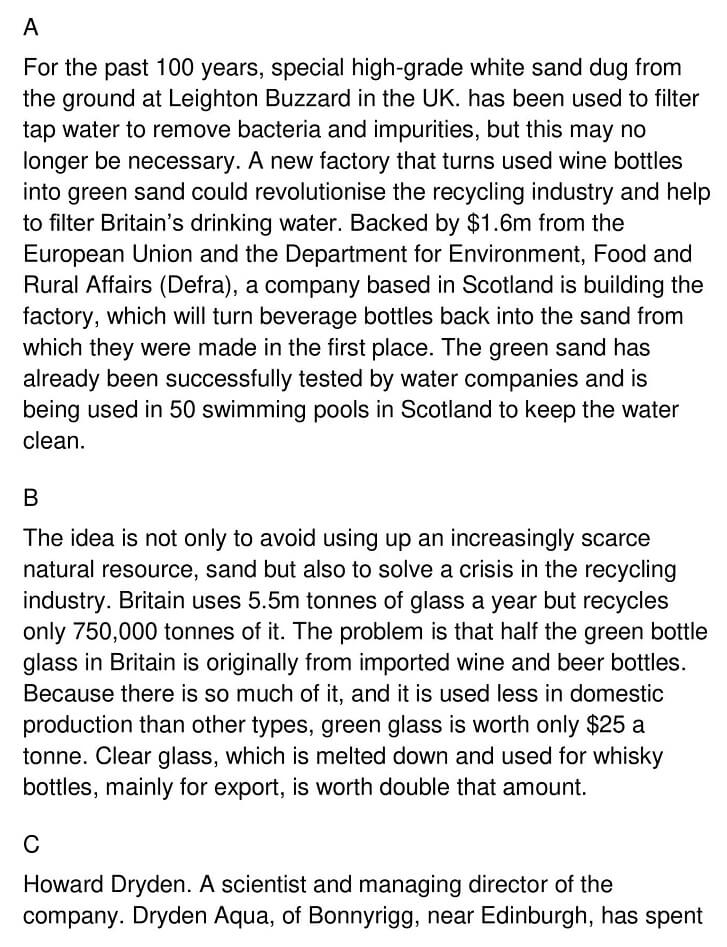
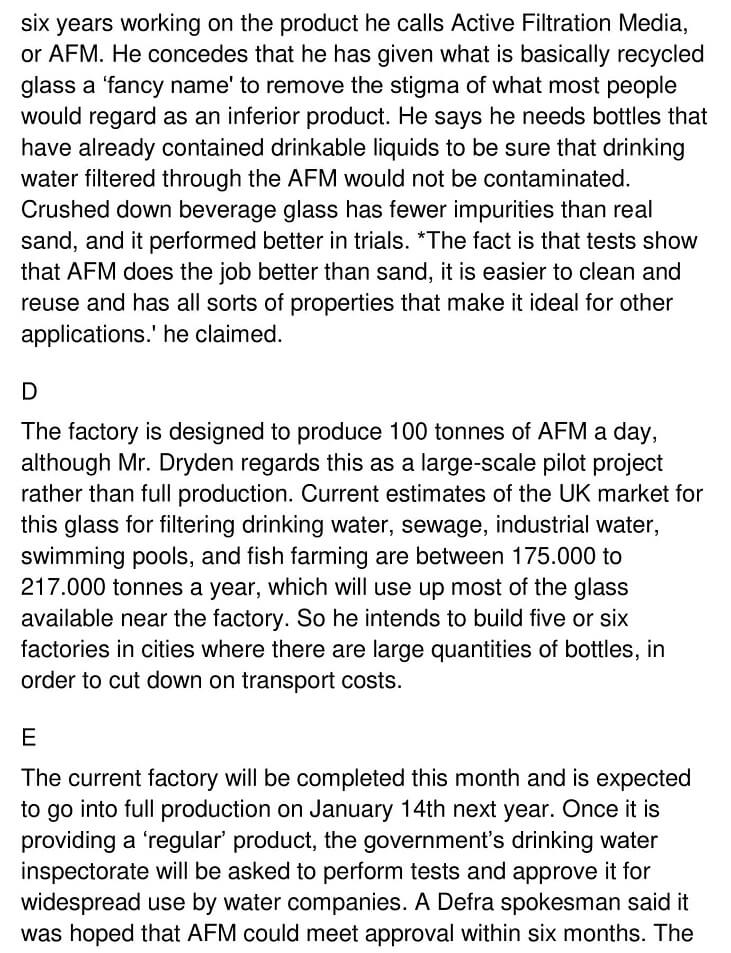
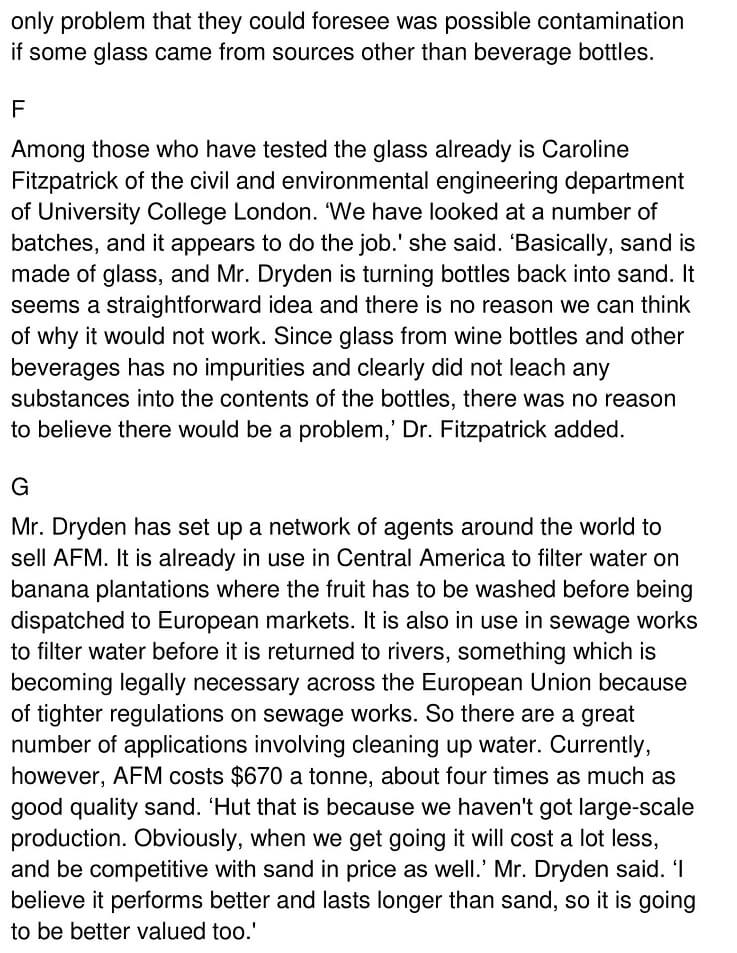

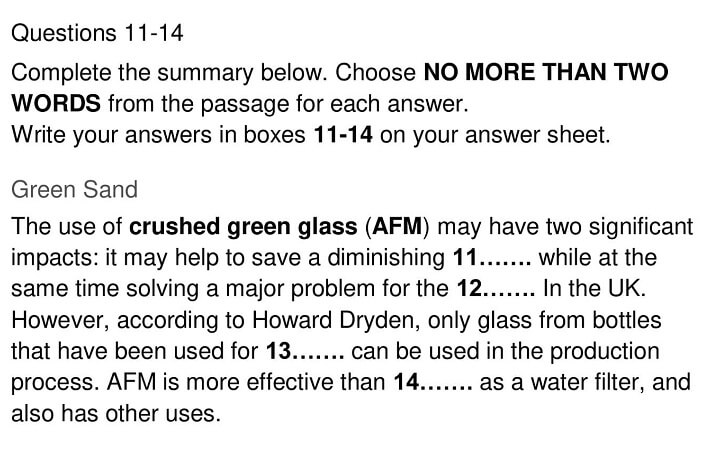
Answers
The answers to these questions are given below with their explanations.
| Question Number | Answer | Explanation |
| 1 | D | Paragraph D explains that, although the factory is designed to produce 100 tonnes of AFM a day, Mr Dryden ‘intends’ (plans) to build five or six factories in cities’ where ‘there are large quantities of bottles’, in order to ‘cut down on transport costs’. So, if one factory produces 100 tonnes of AFM a day, five to six factories will produce around 500-600 tonnes, thereby expanding the production of AFM. Hence, the answer is D. |
| 2 | E | Paragraph E reveals that a Defra spokesman said it was hoped that ‘AFM’ could meet approval within six months. The ‘only problem’ that they could foresee was ‘possible contamination if some glass came from sources’ (potential danger in the raw material) other than beverage bottles. Hence, the answer is E. |
| 3 | G | Paragraph G points out that ‘AFM is already in use’ in central America to filter water on banana plantations where the fruit has to be washed before ‘being despatched to European markets’ (use in the export market). Hence, the answer is G. |
Unlock Answers
| 4 | B | Paragraph B mentions that the green bottle glass is used less in domestic production than other types, ‘green glass is worth only $25 a tonne’. ‘Clear glass’, which is melted down and used for whisky bottles, ‘is worth double that amount’. Hence, the answer is B. |
| 5 | D | Paragraph D states that 100 tonnes of ‘AFM’ is produced in a day. Current estimates of the ‘UK market’ (the domestic market) for this glass for ‘filtering drinking water, sewage, industrial water, swimming pools and fish farming’ (list of potential applications of AFM) are between 175.000 to 217.000 tonnes a year. Hence, the answer is D. |
| 6 | F | Paragraph F informs that Caroline Fitzpatrick of the civil and environmental engineering department of University College London tested the glass. She concluded that, ‘Basically, ‘sand is made of glass’ and Mr Dryden is ‘turning bottles back into sand’. It seems a ‘straightforward idea’.’ She adds that since ‘glass from wine bottles and other beverages has no impurities’ and clearly ‘did not leach any substances into the contents of the bottles’, there was no reason to believe there would be a problem. Hence, the answer is F. |
| 7 | A | Paragraph A declares that backed by ‘$1.6m from the European Union and the Department for Environment, Food and Rural Affairs (Defra)’ (funding), a ‘company based in Scotland’ is building the factory, which will ‘turn beverage bottles back into the sand’ from which they were made in the first place. The ‘green sand’ has already been successfully tested by water companies and is being used in 50 swimming pools in Scotland to keep the water clean. Hence, the answer is A. |
| 8 | C | Paragraph C let out the fact that Drvden Aqua has spent six years working on the product he calls Active Filtration Media, or AFM. He concedes that ‘he has given what is basically recycled glass a ‘fancy name’’ to ‘remove the stigma of what most people would regard as an inferior product’ (explanation of the chosen brand name for crushed green glass). Hence, the answer is C. |
| 9 | G | Paragraph G relates that AFM is already in use in central America ‘to filter water on banana plantations’ where the fruit has to be washed before being ‘despatched to European markets’ (exporting). It is also in use ‘in sewage works to filter water before it is returned to rivers’, something which is becoming legally necessary across the European Union because of tighter regulations on sewage works. Hence, the answer is G. |
| 10 | E | Paragraph E states that the current AFM factory is expected to go into full production on January 14th next year. Once it is ‘providing a ‘regular’ product’, the ‘government’s drinking water inspectorate will be asked to perform tests and approve it’ (description of what has to happen) for ‘widespread use by water companies’ (for general use).
Hence, the answer is E. |
| 11 | Natural resource | The first sentence of paragraph B mentions that the idea behind building the factory in Scotland,is not only to ‘avoid using up an increasingly scarce natural resource’, but also to solve a crisis in the recycling industry. Hence, the answer is ‘natural resource’. |
| 12 | Recycling industry | In the beginning of paragraph B, it is conveyed that the idea behind building the factory of AFM in ‘Scotland’ (UK), is not only to avoid using up an increasingly scarce natural resource, but also to ‘solve a crisis in the recycling industry’. Hence, the answer is ‘recycling industry’. |
| 13 | Drinkable liquids/beverages | Paragraph C introduces Howard Drvden. a scientist and managing director of the company, Drvden Aqua, who says he needs bottles that have already contained ‘drinkable liquids’ to be sure that drinking water filtered through the AFM would not be contaminated. Crushed down ‘beverage’ glass has fewer impurities than real sand and it performed better in trials.
Hence, the answer is ‘drinkable liquids/beverages’. |
| 14 | (real) sand | Paragraph C claims that ‘AFM’ does the job of filtering fewer impurities better than ‘real sand’/better than ‘sand’ as it is easier to clean and reuse and has all sorts of properties that make it ideal for other applications. Hence, the answer is ‘(real) sand’. |
Check More IELTS Reading Answers
Also check :
Practice IELTS Reading based on question types

Start Preparing for IELTS: Get Your 10-Day Study Plan Today!
Recent Articles

Nehasri Ravishenbagam

Haniya Yashfeen

Haniya Yashfeen

Haniya Yashfeen
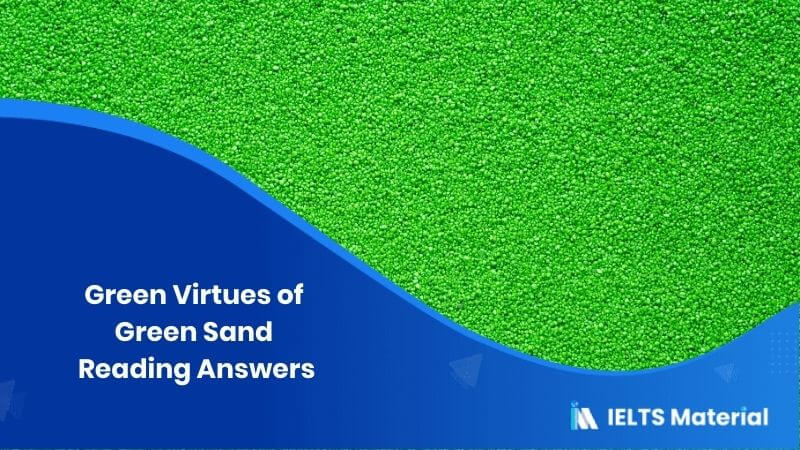



Post your Comments